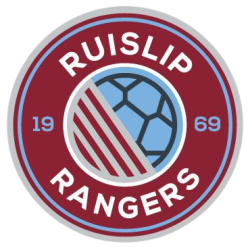All persons involved with Ruislip Rangers as a member of staff, a player or a volunteer helper shall read and understand that they will endeavour to comply with the following club health and safety policy.
Ruislip Rangers is committed to providing a safe playing and coaching environment for all players, managers and coaches, club officials, and any related third parties. Responsibility for health and safety ultimately lies with the committee of the club. However, all parties have a legal responsibility, as stated under Section 7 of the Health and Safety at Work Act 1974, to do everything practicable to prevent an accident or injury.
Ruislip Rangers aims to promote health and safety, so far as reasonably practicable, by ensuring:
- the provision and maintenance of safe equipment that poses no risk to health;
- the provision of relevant information to players, managers and coaches, club officials and any related third parties as is necessary to ensure health and safety;
- maintenance of safe environments, including a means of access in a condition that is safe and without risk to health;
- progressive identification and assessment of all risk, taking measures to eliminate or control it;
- compliance with statutory regulation on health and safety and welfare of players, managers and coaches, club officials, and any related third parties; and
- effective measures, such as fire alarms, are in place to deal with emergencies.
This list is not exhaustive and represents general principles followed by players, managers and coaches, club officials, and any related third parties in respect of health and safety.
All persons involved in any event organised by Ruislip Rangers shall have and wear the correct clothing and equipment to participate in the event. The person in charge of the event shall ensure the following:
- There is a competent person to administer first aid.
- There is a suitable first aid kit available at the event.
- The full address of the location where the event is taking place is known.
- There is an Emergency Action Plan (www.ruisliprangersyfc.org.uk/emergency-action-plan)
- All participants are fully warmed up and prepared for the event they are to participate in.
- A visual risk assessment should be carried out prior to any event commencing, this will include:
- ensuring the area to be used and the surrounding area is free from any obstacles;
- ensuring the equipment to be used is suitable for its intended use – for example, that goal posts are safe, that corner flags are to the correct height, that balls do not have splits; and
- ensuring that the participants have the appropriate clothing and appropriate equipment.
In the event of a person receiving an injury, an ‘Accident Report Form’ is required to be completed. The form is available for download from www.ruisliprangersyfc.org.uk/useful-documents-downloads. Once this has been completed, it is to be given to the Club Secretary.
Goalpost Safety Guidelines
The Football Association, along with the Department for Culture, Media and Sport, the Health and Safety Executive and the British Standards Institution, have drawn up the following guidelines for the safe use of goalposts. Too many serious injuries and fatalities have occurred in recent years as a result of unsafe or incorrect use of goalposts. Safety is always of paramount importance and everyone in football must play their part to prevent similar incidents occurring in the future.
For safety reasons goalposts of any size (including those which are portable and not installed permanently at a pitch or practice field) must always be anchored securely to the ground. Portable goalposts must be secured by the use of chain anchors or appropriate anchor weights to prevent them from toppling forward.
It is essential that under no circumstances should children or adults be allowed to climb, swing on or play with the structures of the goalposts. Particular attention is drawn to the fact that if not properly assembled and secured, portable goalposts may topple over.
Regular inspections of goalposts should be carried out to check that they are kept properly maintained. Portable goalposts should not be left in place after use. They should be dismantled and removed to a place of secure storage.
It is strongly recommended that plastic hooks should only secure nets or tape and not by metal cup hooks. Any metal cup hooks should be removed and replaced. New goalposts should not be purchased if they include metal cup hooks, which cannot be replaced.
Goalposts which are home-made or which have been altered from their original size or construction should not be used. These have been the cause of a number of deaths and injuries.
Guidelines to prevent toppling
Follow manufacturer’s guidelines in assembling goalposts. Before use, adults should:
- Ensure each goal is anchored securely in its place.
- Exert a significant downward force on the crossbar.
- Exert a significant backward force on both upright posts.
- Exert a significant forward force on both upright posts.
- These must be repeated until it is established that the structure is secure. If not, alternative goals/pitches must be used.
